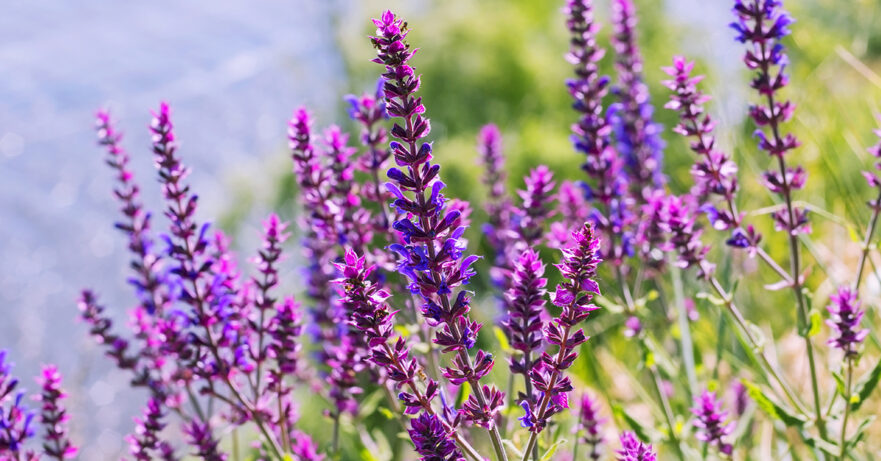In this monograph about sage:
📖 Introduction | 🌱 Botanical Description | 📜 Traditional Uses | 🔍 Phytochemistry | ✨ Applications and Uses | 🛡️ Safety Profile
📖 Introduction
Sage (Salvia officinalis) s a revered herb in the Lamiaceae family. It is prominent in herbal medicine, culinary arts, and ancient rituals.
Known for its aromatic leaves, sage has been celebrated for its medicinal, culinary, and ornamental uses throughout history.
| English Name | Sage |
| Latin Name | Salvia officinalis |
| Parts Used | Leaves |
| Traditional Uses | Antiseptic, digestive aid, menopause relief |
| Herbal Actions | Antimicrobial, anti-inflammatory, carminative, astringent |
🌱 Botanical Description
Scientific Classification
Salvia officinalis belongs to the Lamiaceae (mint) family, known for its aromatic and medicinal plants.
Physical Characteristics
Sage plants have woody stems and greyish leaves and bear blue to purplish flowers. A pebbled texture distinguishes its leaves.
Natural Habitat and Cultivation Details
Native to the Mediterranean region, sage thrives in well-drained, neutral to slightly alkaline soil and enjoys full sun. It’s widely cultivated worldwide in herb gardens and for commercial purposes.
📜 Traditional Uses
Traditionally, sage has been used for its antiseptic, astringent, and antibacterial properties. It was commonly used in mouth rinses to clean wounds and treat sore throats, coughs, and dental abscesses.

🔍 Phytochemistry (Active Constituents)
Sage contains a rich array of phytochemicals that contribute to its health benefits:
- Essential Oils: Including thujone, which is known for its antimicrobial properties.
- Phenolic Acids: Including rosmarinic acid, which contributes to the herb’s antioxidant and anti-inflammatory actions.
- Flavonoids: Contributing to the herb’s antioxidant and anti-inflammatory effects.
✨ Applications and Uses
Sage is utilized in herbal medicine for:
- Digestive health: Relieving indigestion and bloating.
- Oral health: It soothes the lining of the digestive tract and may aid in conditions like gastritis and acid reflux.
- Sweating: Sage has been specifically studied for its effectiveness in reducing excessive sweating, with some studies indicating positive outcomes.
The herb’s efficacy in these applications is attributed to its broad spectrum of phytochemicals, which provide antioxidant, anti-inflammatory, and antimicrobial effects.
🛡️ Safety Profile
Sage is generally safe for most individuals when used in culinary amounts. Medicinal use of sage should be under the guidance of a healthcare provider, particularly for long-term use defined as more than 4 weeks or in higher doses exceeding 4-6 grams daily due to the presence of thujone, which can be neurotoxic in excessive amounts.
Pregnant and nursing women should avoid sage due to the potential for thujone to affect the menstrual cycle and lactation. Interactions with medications, particularly those affecting the nervous system and blood sugar levels, warrant caution and should be discussed with a healthcare provider.
📃 Related Posts
🌱 Related Herbs

